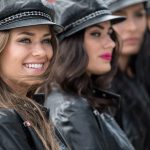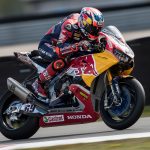In my last ramblings, after the first round of this year’s Superbike Championship in Australia, I spoke about various matters relating to TV channels and broadcast rights within and around the Championship. Much of what I knew had come from conversations with riders, marketing staff within some teams and also directly from those involved in TV production. I thought it only fair that I should have a chat with Dorna themselves about the overall TV and marketing strategy for WorldSBK.
In Thailand I had the opportunity to sit down with Media Director, David Arroyo and Communication and Brand PR Officer, Ben Cobb and talk in general about the promotion and marketing of the series and how they view what is often termed ‘disruptive’ media; Facebook Live, Periscope etc
It was clear that neither David or Ben were going to give away the details of their TV deals but they both spoke openly about the desire to grow the media profile of the series and how the relationship with TV broadcasters was central to Dorna’s overall plan. A key element this year is to be more proactive with the media that is local to an event, in particular TV broadcasters. Arroyo acknowledged that: “We have to know who we are. We are not Formula 1, we are not MotoGP, we are not football. We are World Superbikes. It’s a fantastic event but we are struggling some times to attract media to the event.”
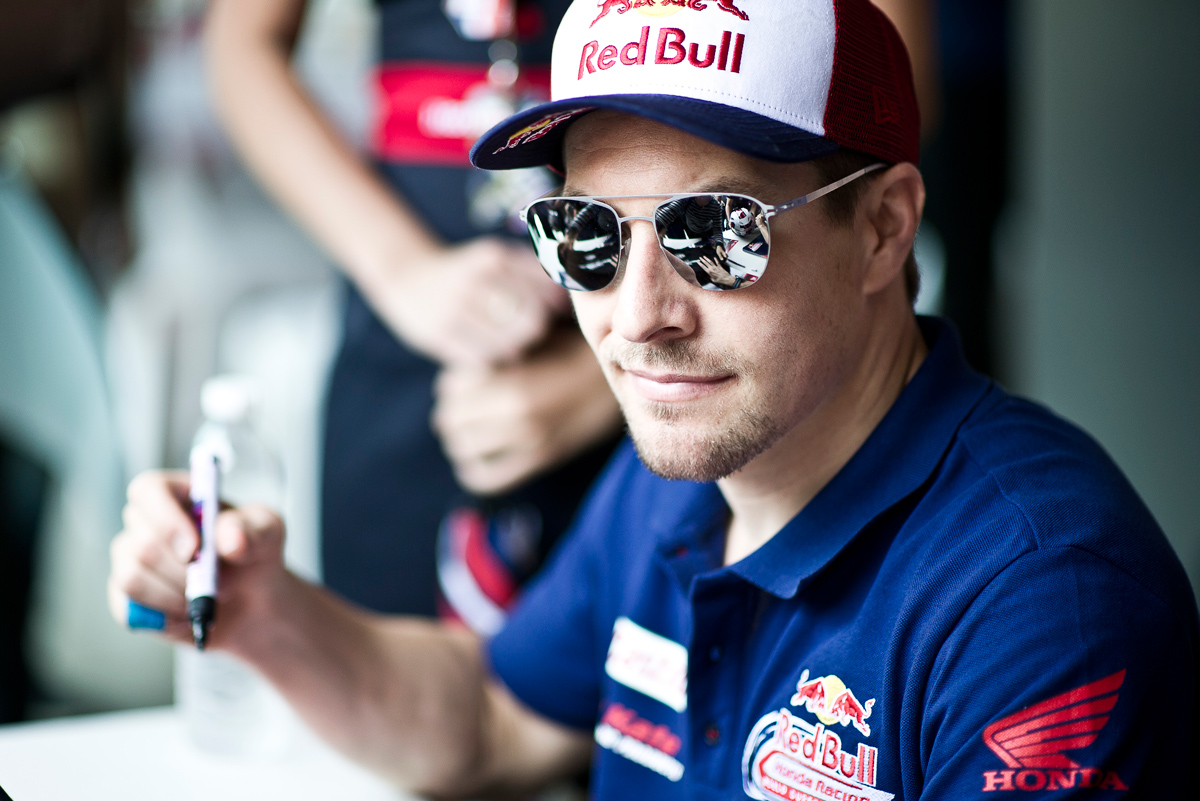
This is why in Australia for example, along with the local promoter at Phillip Island, they arranged for Michael Van Der Mark and Alex Lowes to appear on a children’s TV show and for one of the TV channels to host their breakfast news sport’s broadcast direct from Phillip Island. They also hosted a media lunch as a meet and greet with some riders in Melbourne. It’s a different strategy from the previous pre-event activities but it is clear that something has to change. Arroyo refers to it as his Angry Birds strategy: “In Angry Birds if you always do the same things you will always have 10,000 points. If you want to achieve 100,000 you have to change. Maybe one time you will score 1000 but another time you will score 120,000, then you can change and understand what doesn’t work.”
That raises the issue of the live broadcasting on on-line social networks. This is a change in the media landscape and I can fully understand the restriction any sports rights holder imposes on the broadcasting of moving pictures from their events, live or otherwise, be it Formula 1, the Olympics, the football World Cup, right down to domestic sports events. This is a major way a promoter or rights holder generates their income, by selling exclusivity to the moving images and off the back of that, track or pitch side advertising at events. The term used is ‘eyeballs’. The more people watching the event, the more ‘eyeballs’ you have, the more income can be generated.
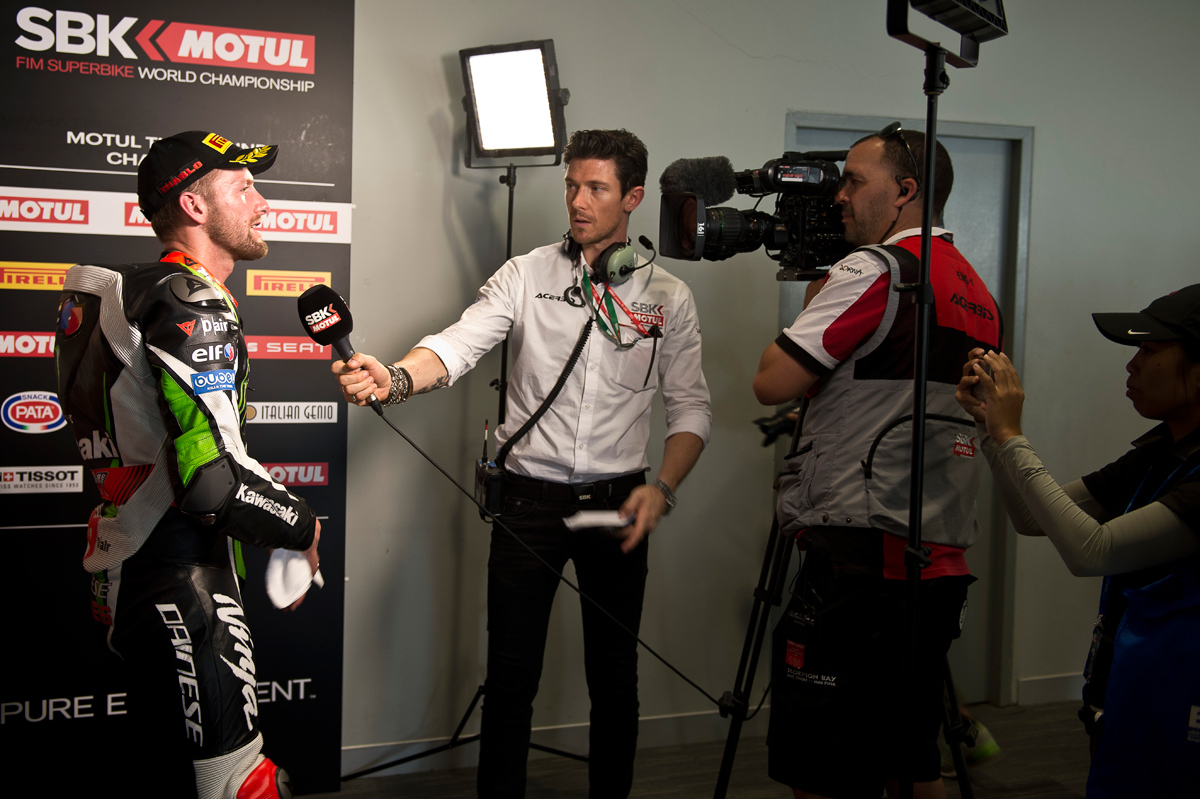
However, if you look around the grandstands at a WorldSBK meeting, the age demographic points towards a fan base at 35 and older. If the series is to grow as Arroyo and Dorna hope they surely need as many ‘eyeballs’ as they can muster but particularly amongst a younger generation who consume the majority of their media via their smart phone or tablet.
It’s something that he and Ben Cobb are acutely aware of and realize that they cannot stem the flow but have to manage it in a way that they get the desired broader range of coverage without giving away the crown jewels. At the moment on-line broadcasting is a global outlet and this would conflict with any existing, traditional broadcast rights in individual territories. So for now restrictions on on-line broadcasting of any video footage from inside the paddock will remain the same but they are in discussion with several broadcasters over how to manage the situation in the future to everyone’s advantage.
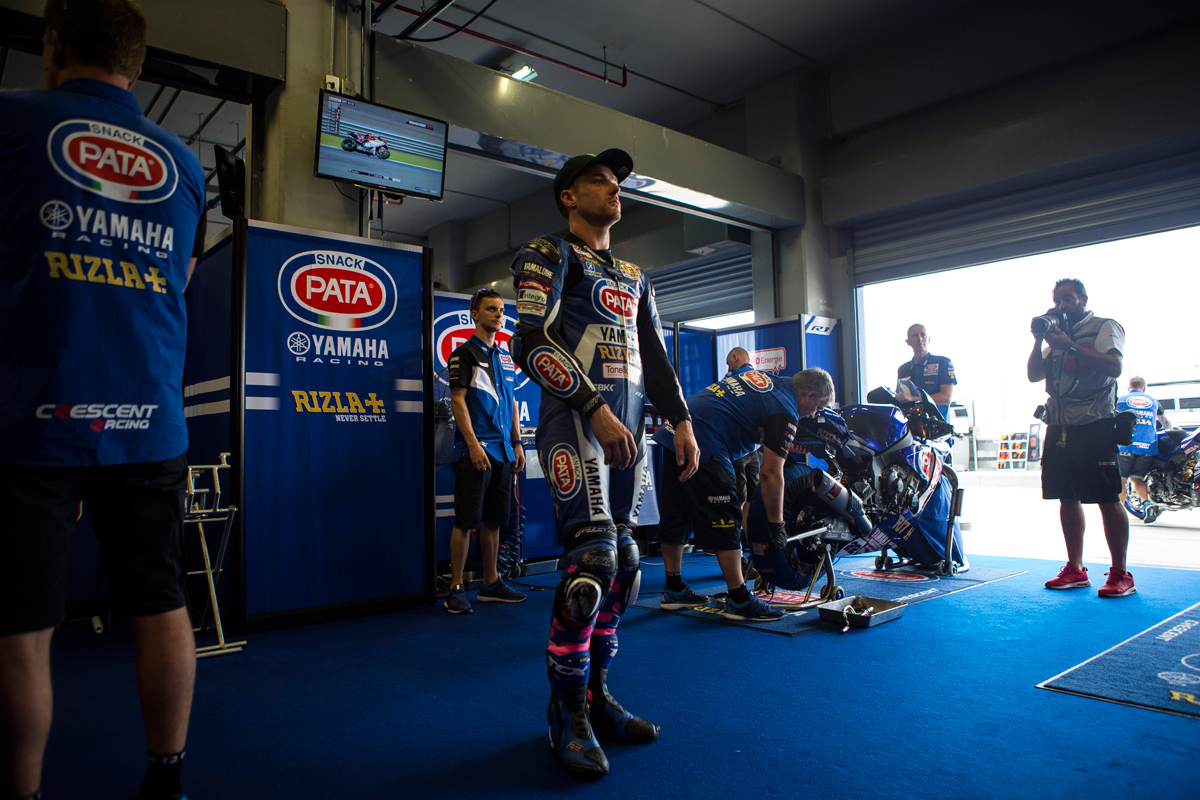
Away from the track is a different story and Cobb pointed out that he is actively looking to engage the riders in generating social media content. He has been instrumental in certain riders creating Instagram and Twitter accounts and asking them to send content directly for Dorna to post on their own time-lines, thereby creating a series of links between riders, teams, Dorna and fans. The flow from most riders has been slow but he and Arroyo acknowledge that it is a long-term strategy they have to adopt and slowly but surely the riders are cottoning on.
It is easy to be critical when you sit in your armchair or stand on the sidelines but it is clear that Arroyo and his marketing team are constantly thinking of new and different ways of promoting WorldSBK.
One criticism I often hear and read at the moment is that the racing is too predictable; Jonathan Rea and Kawasaki are too dominant, that it’s always British guys on the podium. That is something that Dorna can’t really control. The best manufacturers, teams and riders will always rise to the top. At the moment Rea and Kawasaki are at the peak but it won’t always be that way. If there is one thing you can’t criticize Dorna for is that they won’t stop trying to grow the series. How they do that is where the debate lies but for now it seems they are more than determined to succeed. Ultimately the fans will decide if they are interested or not but we have to hope we have results of 120,000 more than 1000.
Photos by GeeBee Images


